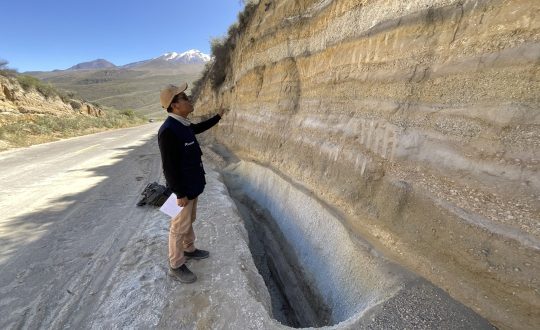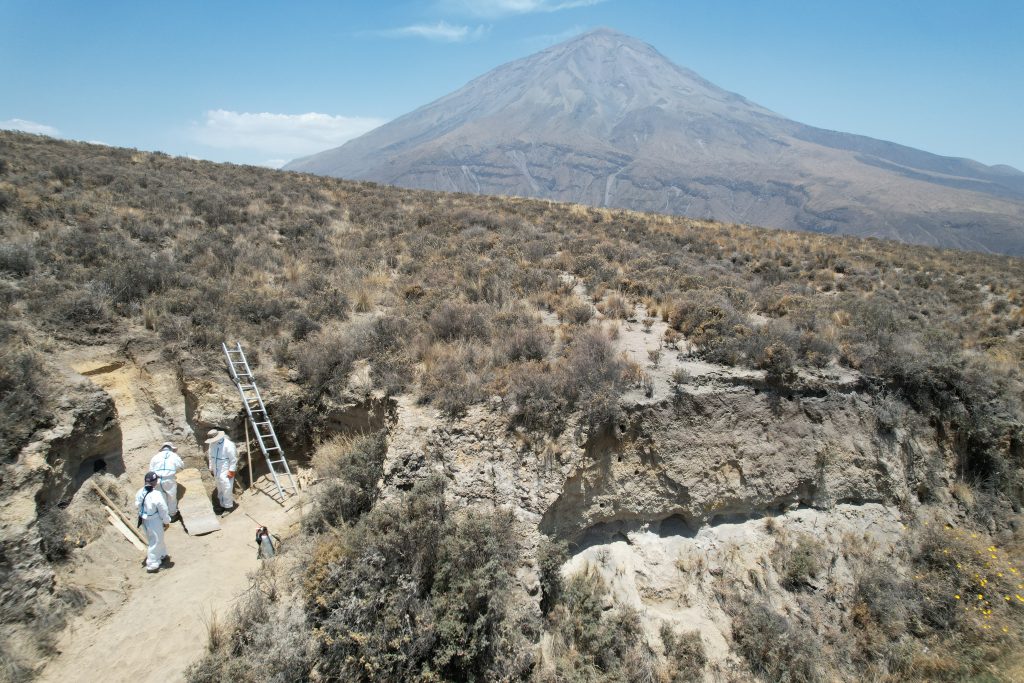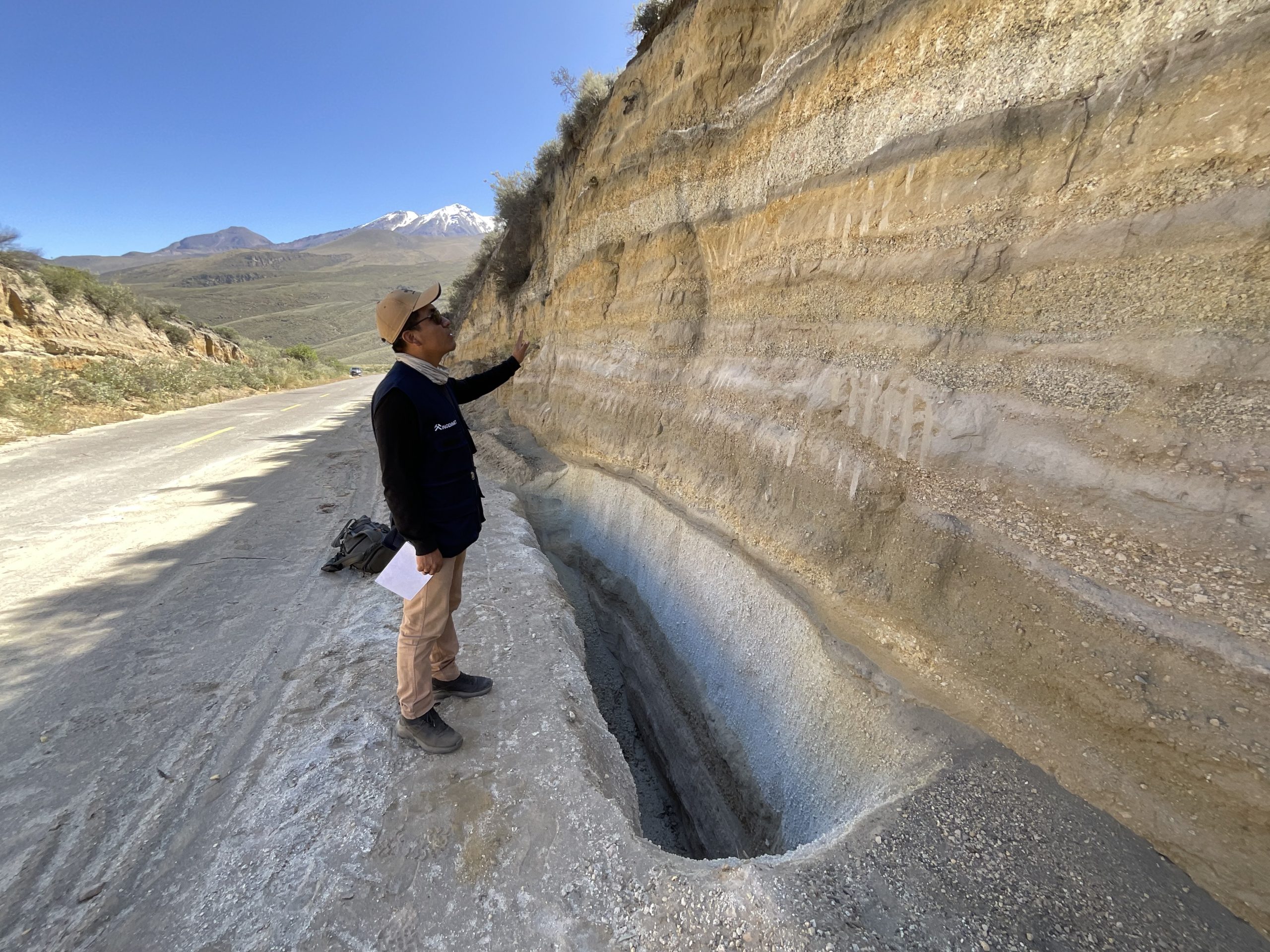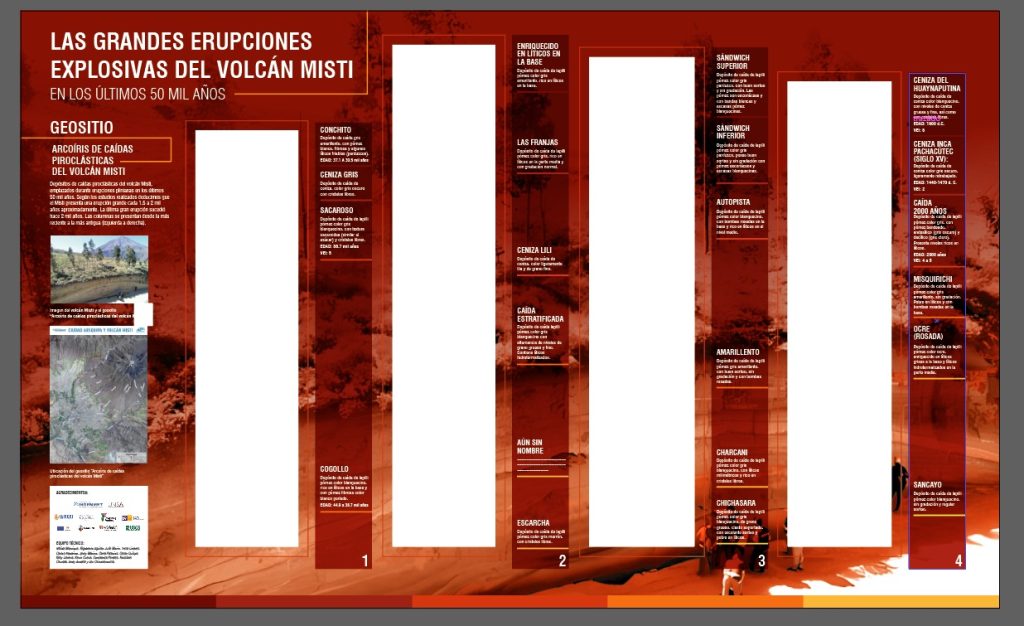
Location
Arequipa, Peru
Synopsis and Position
Arequipa (Peru) is a highly vulnerable city in the face of volcanic hazards, exposed to potential devastating explosive activity of Misti volcano. Yet risk awareness is extremely low, as nobody has in mind a recent eruption.
During its past activity, Misti volcano has deposited layers of volcanic products that can be partially found in different parts of the territory. In 2022, the construction of a road uncovered an incredible and unique ~5-meters high outcrop with 21 layers of deposits, which represent the last 50.000 last years of Misti activity.
Presented to the public, this outcrop will be a unique opportunity to raise risk awareness on both the magnitude and the frequency of the Misti explosive eruptions, and thus to better engage with disaster reduction measures.
Objectives and Methods
Our goal has been to archive this outcrop to preserve it after its discovery in 2022 and before it may be severely degraded by the rainy season from January 2023, as it is made of very loose material that may not have survived heavy rains.
To do this, we have impregnated the stratigraphic deposits by “painting” the outcrop with an epoxy resin. Once dried, the epoxy formed hard plates that could be removed for relocation.
The final aim was to transport them to museums in the city of Arequipa to be exhibited. It will allow the scientist and risk managers to better communicate with the public to raise risk awareness, which is essential to be better prepared to deal with a future eruption in Arequipa.

Activities
- We carried out the first part of the project (making the epoxy sections) in November–December 2022.
- First step was to look for different outcrops from which we could reconstruct all the eruptions visible on the main outcrop, so as not to damage it by working on it intensively.
- We led tests with various epoxy resins to see which the best allows to ‘capture’ stratigraphic deposits.
- Audio-visual contents have been created during the November-December 2022 fieldwork. Their editing and formatting is in progress (it will be ready by December 2023 to be displayed alongside the outcrop).
- Two columns of ‘epoxied’ deposits around 8 meters high were created, one for each exhibition. The final height varies from that of the main deposit due to variations in deposit thickness from one outcrop to another. Each column was then cut back a little to fit into the respective exhibition rooms.
- Audio-visual contents have been created during and after the main November-December 2022 fieldwork. Their editing and formatting is in progress (it will be ready by December 2023 to be displayed alongside the outcrop). The contents describe both the archival process and the outcrop itself, providing an interactive reading guide to the epoxy outcrop on display in the exhibitions. It will be available on a screen located near the outcrop and online through a QR code.
- Through these activities, two exhibitions have been created. The first one, to be inaugurated in April 2024, is displayed at Universidad Nacional San Augustin, to reach out to all students at the university, and more especially geology students. The second exhibition will be launched at the INDECI Museum by mid-2024. The entire showroom was modified to accommodate the sections, and the whole scientific information updated at the same time.
Left to right: 1. César Quispe and Nélida Manrique are cleaning one of the outcrops where the epoxy will be applied. 2. Rigoberto Aguilar compares the deposits on the outcrop with the stratigraphic column established on the main deposit to ensure that all the deposits are captured from the recent cleaned sections. 3-4. Different resins are tested (sometimes in combination with other elements, such as glass wool) to understand which is the most suitable both at the time of application and in terms of results. 5. Molds are also used to test the epoxy on different types of volcanic fallouts (right), and to find solutions so that deposits can safely be handled by visitors at the INDECI museum. All © J. Morin
Left: The sections have been set up at the UNSA and sealed off (left, © Nelida Manrique) until the audiovisual content (right, © K. Llerena) was installed and the exhibition inaugurated.
Workshops and Events
- During the fieldwork, we received geology students and their professors from national universities, as well as workers from Cerro Verde, in order to present the method and the hazards and risks associated with Misti eruptions.
- The project results were presented at the Conference Cities on Volcanoes in Antigua, Guatemala, in February 2024.
- Following Cities on Volcanoes, fieldwork was carried out on the island of Ometepe, in Nicaragua, to offer a skills transfer to our colleagues volcanologists from INETER.
- The exhibition at UNSA will be inaugurated early April 2024, with an introductory lightning talk about the birth of the project, followed by three talks from project’s members on (1) the activity of Misti volcano, (2) the epoxy sections methodology, and (3) the exhibitions conception. with the In addition to the 600 geology students from UNSA, representatives from the local municipalities, regional government, civil protection, and national universities are invited to attend this event.



